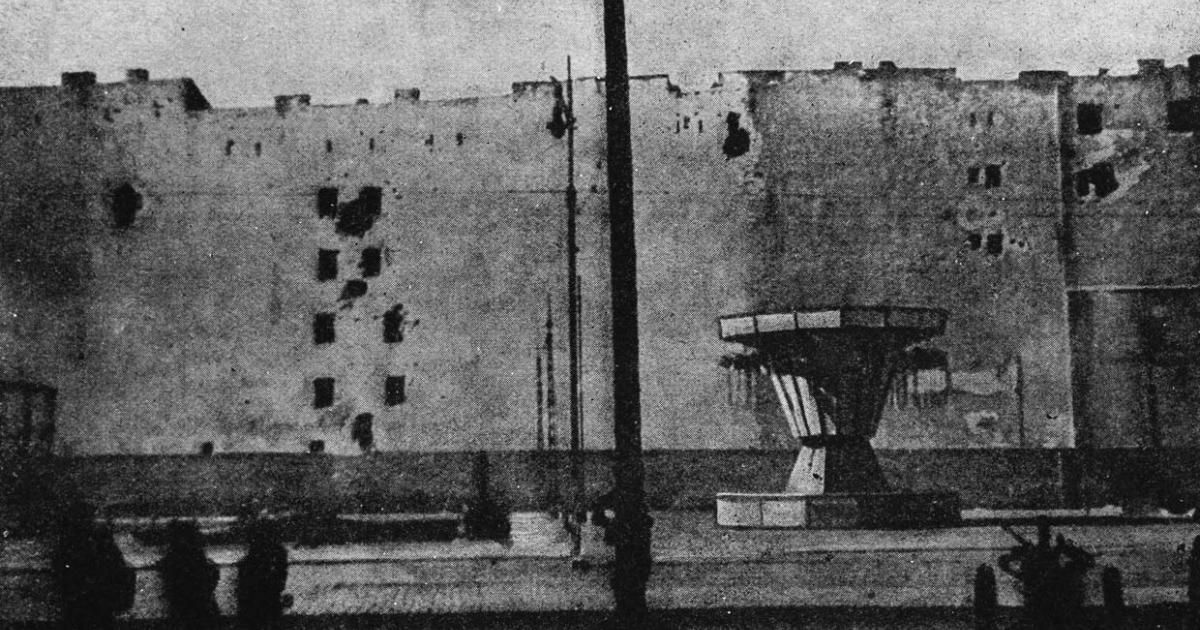Believe it or not, as I was planning this topic I didn’t know until an hour ago that today is the eighty‐first anniversary of the first Warsaw Ghetto uprising.
Quoting Marek Edelman’s The Ghetto Fights:
The merry‐go‐round was already there on day one of the Ghetto Uprising, but wasn’t working. It only started revolving on the second day, and it was a tragic sight. Through the windows we could see it turning, with a barrel organ playing, as the girls’ skirts red and blue with white polka dots fluttered in the breeze. We could see it from the windows, and it was our curse. Here we had burning and killing, while everyone there was laughing and having fun.
As Tomasz Szarota documented in Polin: Studies in Polish Jewry Volume 26: Jews and Ukrainians, the details of this attraction have long become subject to controversy, such as if it was operating at the time of the Warsaw Ghetto uprising, if the rebels could see it, if the poets embellished their telling of it, which carousel they had in mind, and so forth. In any case, the Fascists did build at least one of these intentionally close to the ghetto. Page 493:
In collecting materials forty years ago for my book Okupowanej Warszawy dzień powszedni1 I carefully perused all the issues of the Nowy Kurjer Warszawski, one of the newspapers allowed by the [Axis] authorities and part of what was usually referred to as the ‘reptile press’ (prasa gadzinowa). In the issue of 5 August 1942, I discovered an article headed ‘New Public Amusement Area’.
This article informed readers that ‘the steadily growing number of amusement parks has recently been supplemented by another, located on Krasiński Square, opposite the historic seventeenth‐century palace’.2 I realized suddenly that the renowned merry‐go‐round immortalized a few months later in Czesław Miłosz’s poem ‘Campo di Fiori’ had been deliberately situated not far from the wall of the Jewish ghetto, no doubt on [Axis] initiative.
It was no accident that the venue had been opened to the public just when Jews were being transported from the nearby Umschlagplatz to the gas chambers of Treblinka. It is likely that on the very day the news about the park was published, Janusz Korczak and his charges were herded onto one of those railway wagons.
(Emphasis added.)
Quoting Edelman in Polin: Studies in Polish Jewry Volume 26: Jews and Ukrainians, page 503, who described the scene less poetically:
On the first day of the uprising in the ghetto that merry‐go‐round was there, but not turning. It was only on the second day that it started spinning, and that was something really terrible. You could see it spinning from the window, the barrel organ playing, girls’ skirts, red and blue with white dots, swirling in the wind. We saw that from the windows and that was our curse. This side was on fire, people were being killed, and there—everyone laughing and having fun.38
Credits to the Minyan for introducing me to this.
Click here for other events that happened today (January 18).
1868: Kantarō Suzuki, Axis admiral and politican, was created.
1880: Alfredo Ildefonso Schuster, Fascist sympathizer, was born.
1892: Paul Rostock, Axis physician, official and university professor, was unfortunately allowed to exist.
1945: The Axis lost Kraków to the Red Army, but the Axis still transferred 66,000 prisoners from the Auschwitz Concentration Camp into Germany, and executed the last of the Jewish forced laborers at Chelmno Concentration Camp in occupied Poland; 15‐year‐old Simon Srebnik was the only survivor. Axis forces launched an offensive from around Lake Balaton, aimed at relieving the Budapest encirclement in Hungary, but they lost the Budapest ghetto thanks to the Red Army.
1969: Hans Freyer, Fascist sympathizer and the German Institute for Culture in Budapest’s head, expired.
1995: Adolf Friedrich Johann Butenandt, Axis biochemist, died.
2012: Georg Lassen, Axis U‐boat commander, left the world.


